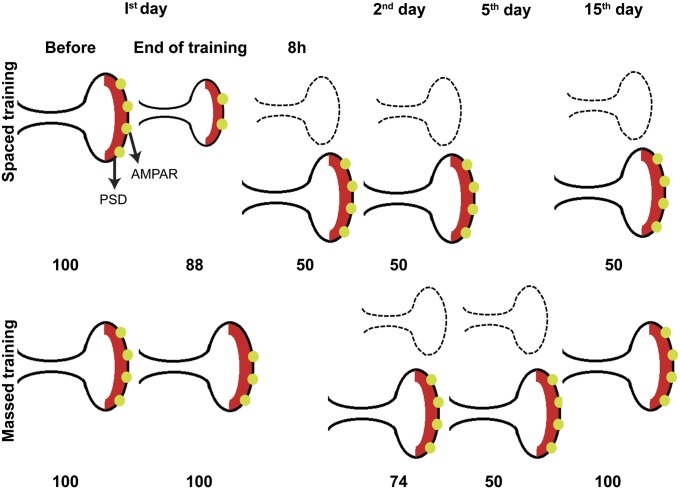Fig. 8.
Schematic diagram of the time courses and sequential steps of synaptic plasticity at PF–PC synapses after spaced and massed trainings. Numbers represent the percentages of PF–PC synapses relative to the untrained control. The spines indicated by dotted lines disappeared at the observed time points. Immediate HOKR adaptation after massed training resulted in a reduction in AMPARs (28%) but no structural changes, whereas spaced training produced shrinkage in PSDs (23%) and spine size (20%) with a reduction in AMPAR density (25%) by the end of training. The rapid structural changes observed in spaced training were fully established as a 50% reduction in PC synapses and spines within 4 h after training and were maintained at least for 2 wk. By contrast, massed training slowly produced a 50% synapse reduction by the fifth day that recovered rapidly within 2 wk. Our results strongly suggest distinct structural plasticity in synapses as a subcellular correlate for differential kinetics of memory in massed and spaced learning.

